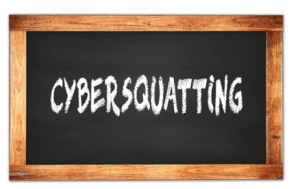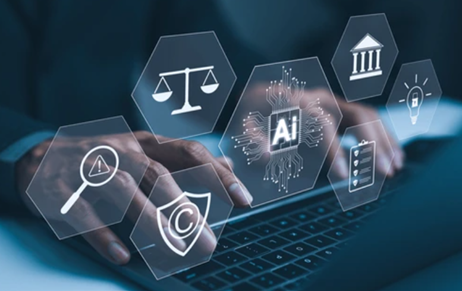Artificial intelligence has a wide range of effects, including on intellectual property law. At best…
Understanding Domain Names and Cybersquatting
A trademark is a graphical representation of a brand’s identity; it acts as a source identifier that distinguishes one trader’s goods or services from another’s. In the online world, domain names often embody trademarks. They act as identifiers, enabling consumers to associate a web address with a specific brand. For example, well-known domain names like “www.amazon.com” or “www.google.com” mirror their respective trademarks, reinforcing consumer trust and brand loyalty and making it easier for customers to find and identify the brands’ websites.
Like how physical addresses connect customers to brick-and-mortar stores, domain names link businesses to online audiences. Technically, each domain name corresponds to an IP address—a string of numerical identifiers for a website. For example, http://www.amity.edu/ is easier to remember than 55.66.187.102. Since an IP address can be cumbersome to remember, human-readable domain names bridge the gap, making web navigation simpler for users.
Cybersquatting occurs when individuals or entities register domain names identical or confusingly similar to established trademarks, intending to profit illegitimately. The practice thrives on reserving such domain names in bad faith, either to resell them at exorbitant prices to rightful trademark owners or to dilute the brand’s reputation. There are two ways to do it. One is to exploit typographical errors, e.g., registering “gogle.com” instead of “google.com.”. The other is to use well-known brand names as domain names, such as “cocacola.org.”
In landmark cases like Yahoo! Inc. v. Akash Arora[1], the plaintiff was a registered owner of the domain name “yahoo.com”, succeeded in obtaining an interim order restraining the defendants and agents from dealing in goods and services on the rise also under the domain name “yahooindia.com” or any other name which is deceptively similar to that of plaintiff’s trademark “yahoo”.
In the case of Sataym Infoway Ltd. v. Siffynet Solutions (P) Ltd.[2], Hon’ble Supreme Court explained the importance of domain names: “The original role of a domain name was no doubt to provide an address for computers on the Internet. However, the internet has developed from a mere means of communication to a mode of carrying on commercial activity. With increased commercial activity on the internet, a domain name is also used as a business identifier. Therefore, the domain name serves as an address for internet communication and identifies the specific internet site. In the field of commercialization, each domain name owner provides information/services associated with such domain name. Thus, a domain name may pertain to the provision of services within the meaning of section 2 (z). A domain name is easy to remember and use and is chosen as an instrument of commercial enterprise, not only because it facilitates the ability of consumers to navigate the Internet to find websites, they are looking for but also, at the same time, serves to identify and distinguish the business itself, or its goods or services, and to specify a corresponding online Internet location. Consequently, a domain name as an address must, of necessity, be peculiar and unique. Maintaining an exclusive identity becomes critical when a domain name is used in connection with a business.”[3]

In Rediff Communication Ltd. v. Cyberbooth[4], the court held that “the internet domain names are important and valuable corporate assets. A domain name is more than an internet address and is entitled to protection as a trademark”. The courts highlighted the protection gap for domain names within traditional trademark law. While courts have ordered interim injunctions to protect trademarks in such cases, the absence of explicit cybersquatting laws in India exposes the limitations of current frameworks.
India’s primary trademark legislation, the Trade Marks Act of 1999, lacks provisions explicitly covering domain names or cybersquatting. However, certain remedies are inferred under broader intellectual property rights and the principle of passing off, which protects unregistered trademarks based on reputation. The Information Technology Act of 2000 primarily focuses on cybercrimes, neglecting domain name disputes. No provisions explicitly outline remedies for cybersquatting beyond civil remedies like injunctions or damages. India also has INDRP, similar to UDRP, the difference being it is administered by the National Internet Exchange of India (NIXI) and provides a specialized framework for resolving domain name disputes:
- Grounds for Complaint:
- Domain name is identical or confusingly similar to the complainant’s trademark
- Registrant has no rights or legitimate interests
- Domain was registered and used in bad faith
- Procedural Advantages:
- Cost-effective alternative to litigation
- Faster resolution timeframe (typically 60-90 days)
- Administrative panel of domain name experts
In the United States, the Anti-Cybersquatting Consumer Protection Act (ACPA), 1999 defines and penalizes cybersquatting. Under ACPA, claimants must prove that:
- The defendant’s domain name is identical or confusingly similar to a distinctive or famous trademark.
- The domain was registered in bad faith with an intent to profit.
Elements such as “bad faith” are assessed based on factors like prior legitimate use and intent to mislead consumers. The ACPA grants remedies, including monetary damages, injunctions, and domain transfers, offering robust protection against cybersquatters.
The UK addresses cybersquatting primarily through the Trade Marks Act of 1994. Like India’s legal approach, remedies hinge on proving trademark infringement or misrepresentation via passing off. Precedents, such as the British Telecommunications Plc. v. One in a Million Ltd.[5] case, underscore judicial recognition of cybersquatting and its impact on legitimate trademark holders.
The UK also adopts the Uniform Dispute Resolution Policy (UDRP) mechanism, enabling expedited resolution of abusive domain registrations via arbitration rather than prolonged litigation. Administered by the Internet Corporation for Assigned Names and Numbers (ICANN), the UDRP provides an efficient route to address domain-related disputes. Claimants must establish the following:
- The disputed domain is identical or confusingly similar to their trademark.
- The respondent lacks legitimate interests in the domain.
- The domain was registered and is being used in bad faith.
While the US and UK have advanced their legal frameworks, India relies heavily on common law remedies for cybersquatting. Globally, the UDRP is a preferred option due to its cost efficiency and speed. However, local legislation remains pivotal for comprehensive remedies like damages and injunctions.
As online commerce expands, the risks associated with cybersquatting amplify. Countries like India must adopt specialized laws like the ACPA to bolster domain name protection. Enhanced international cooperation and vigorous enforcement mechanisms under bodies like ICANN or WIPO could also streamline dispute resolution.
Author: Chinmay Goswami, in case of any queries please contact/write back to us via email to chhavi@khuranaandkhurana.com or at Khurana & Khurana, Advocates and IP Attorney.
[1] 1999 SCC OnLine Del 133 : (1999) 2 AD (Del) 229.
[2] (2004) 6 SCC 145 : AIR 2004 SC 3540.
[3] Trademark Protection For Domain Names – Trademark – India, https://www.mondaq.com/india/trademark/1184956/trademark-protection-for-domain-names (Last Accessed: 25 January, 2025)
[4] 1999 SCC OnLine Bom 275 : AIR 2000 Bom 27.
[5] 1998 FSR 265 : [1999] 1 WLR 903 : 1999 FSR 1.



